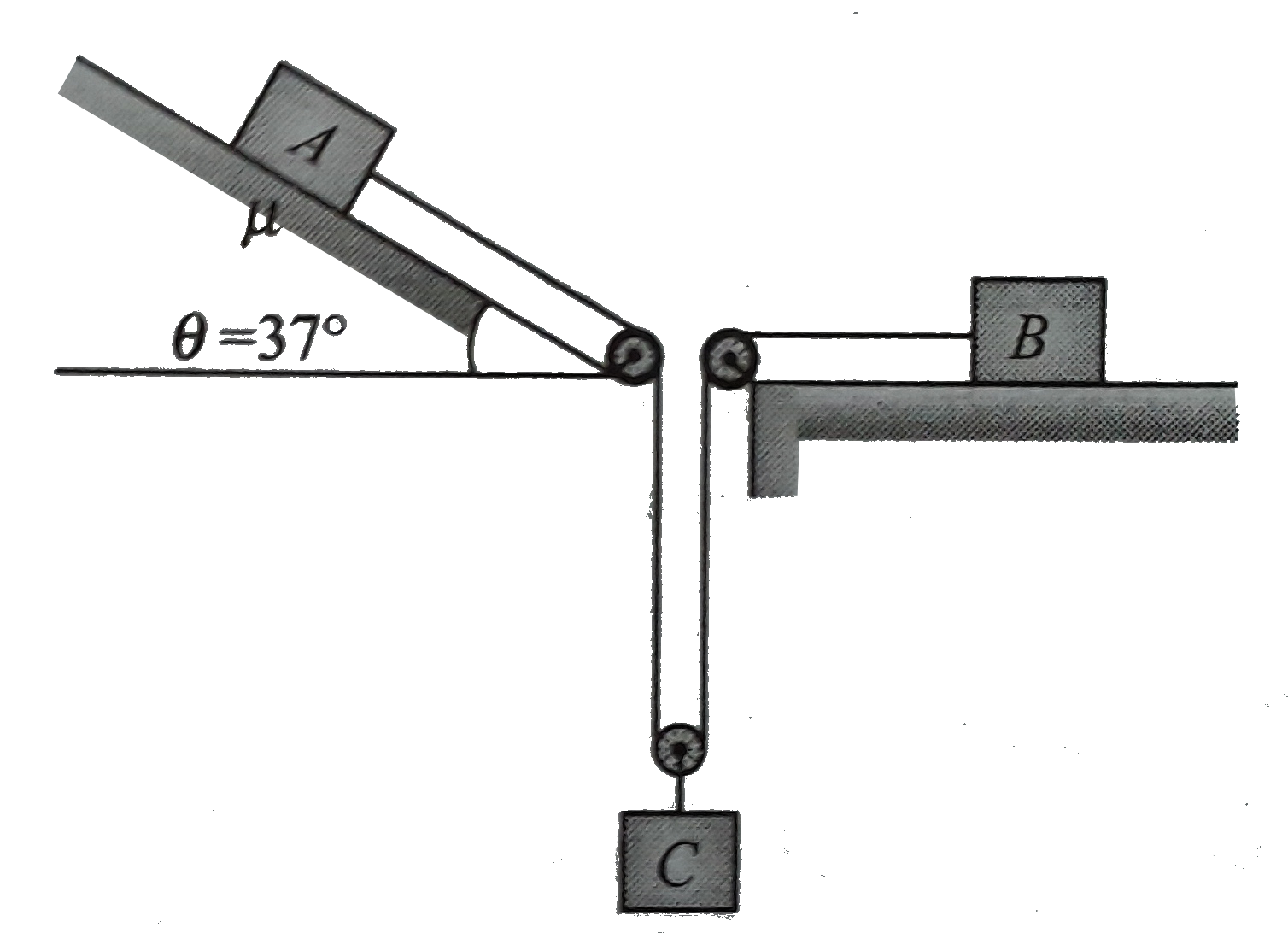Subjective from CENGAGE PHYSICS Chapter 17 NEWTON'S LAWS OF MOTION 2 for Class 11
| Class 11 | PHYSICS |
| Chapter | NEWTON'S LAWS OF MOTION 2 |
| CENGAGE PHYSICS | Subjective |
| Medium | English |
| Academic Year | 2023-2024 |
Question 2
Block A as shown in figure weight 1.40N and block B weight 4.20N The coefficient of kinetic friction between all surface is 0.30 Find the magnitude of the horizontal force (in N) necessary to drag block B to the left at constant speed if A and B are connected by a light , flexible cord passing around a fixed , frictionless pulled.
 View Solution
View SolutionQuestion 3
Two block , with masses m1 and m2 are staked as shown in fig and placed on a frictionless horizontal surface . There is a friction between the two block .An external force of magnitude F is applied to the top block at an angle α below the horizontal . The coefficient of friction between m1 and m2 are μs
b. If the two blocks move together, find their acceleration
b . Calculate the maximum value of force so that blocks will move together
 View Solution
View SolutionQuestion 4
Block A has a mass of 30kg and block B a mass of 15kg . The coefficient of friction between all surface of contact are μs=0.15 and μs=0.10 Knowing that θ=30∘ and that the magnitude of the force F applied to block A is 250N Determine (a) acceleration of block A and (b) the tension in the rope
 View Solution
View SolutionQuestion 5
Block A weight 20kg placed on a smooth surface. Weight B of 2kg is mounted on the block . The coefficient of friction between the block and the weight is 0.25 Calculate the acceleration of the block and the weightand also the frictional force between the block and the weight when a horizontal force 2N applied to the weight as shown in fig What will these quantities be if the horizontal force is 20N?(g=10ms−2)
 View Solution
View SolutionQuestion 7
The masses of the block A and B are mandM Between A and B there is a constant force F but B can slide frictionlessly on the horizontal surface A is set in motion with velocity v0 while B is at rest . What is the distance moved by A relative to B before they move with the same velocity
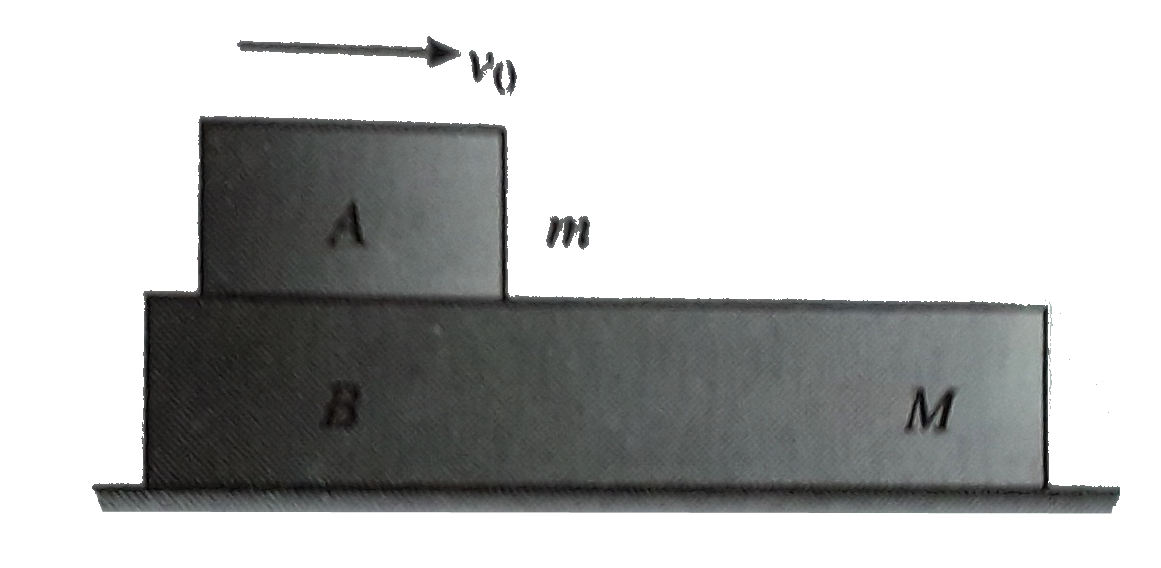 View Solution
View SolutionQuestion 8
Two block of masses m and M are connected by a chord passing around a frictionless pulley which is attached to a rotating frame , which rotates about a vertical axis with an angular velocity ω If the coefficient of friction between the two masses and the surface are μ1 and μ2 respectively determine the value of ω at which the block starts sliding radially (M>m)
 View Solution
View SolutionQuestion 9
A block with mass m1 is placed on an inclined plane with slope angle α and is connected to a second hunging block with mass m2 by a cord passing over a small . Friction less pulley as shown in fig 7.247 . The coefficient of static friction is μ2 and the coefficient of kinetic friction is μs
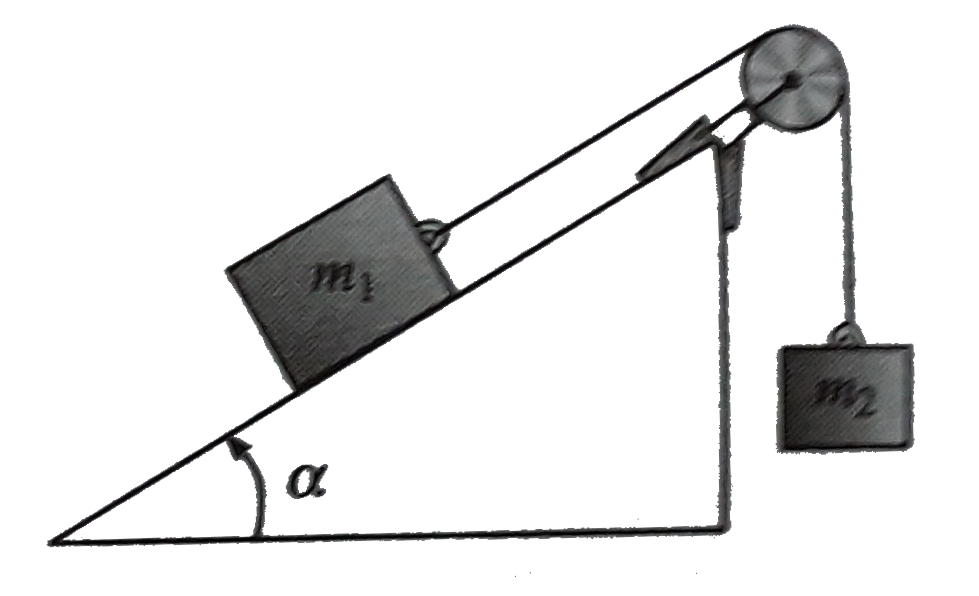
a. Find the mass m2 for which block m1 moves up plane at constant speed once it is set in motion
b. Find the mass m2 for which block m1 moves down the plane at constant speed once it is set in motion
c.For what range of m2 will the blocks remain at rest if they are released from rest? View SolutionQuestion 10
Consider three blocks placed one over the other as shown in Fig. Let as now pull the blocks with the force of magnitudes 18N,100N and 15N Take m1=m2=m3=10kg If the coefficient of static and kinetic friction between all contacting surface are μg=0.2 respectively find the
(a) Acceleration of the block s
(b) Friction at each surfaceView SolutionQuestion 11
Four block are arranged on a smooth horizontal surface as shown in figure .The masses of the blocks are given (see the fig ) The coefficient of static friction between the top and the bottom blocks is μs What is the maximum value of the horizontal force F applied to one of the bottom blocks as shown that makes all four block with the same acceleration ?
 View Solution
View SolutionQuestion 12
A block of mass m is pressed against a wall which is moving with an acceleration a as shown in figure If the block is pulled at an angle θ with downward vertical by a force F and it does not slide relative to the wall . Find the
a. friction force between the block and wall
b.inimum magnitude of F so as to cayse a relative sliding between the block and wall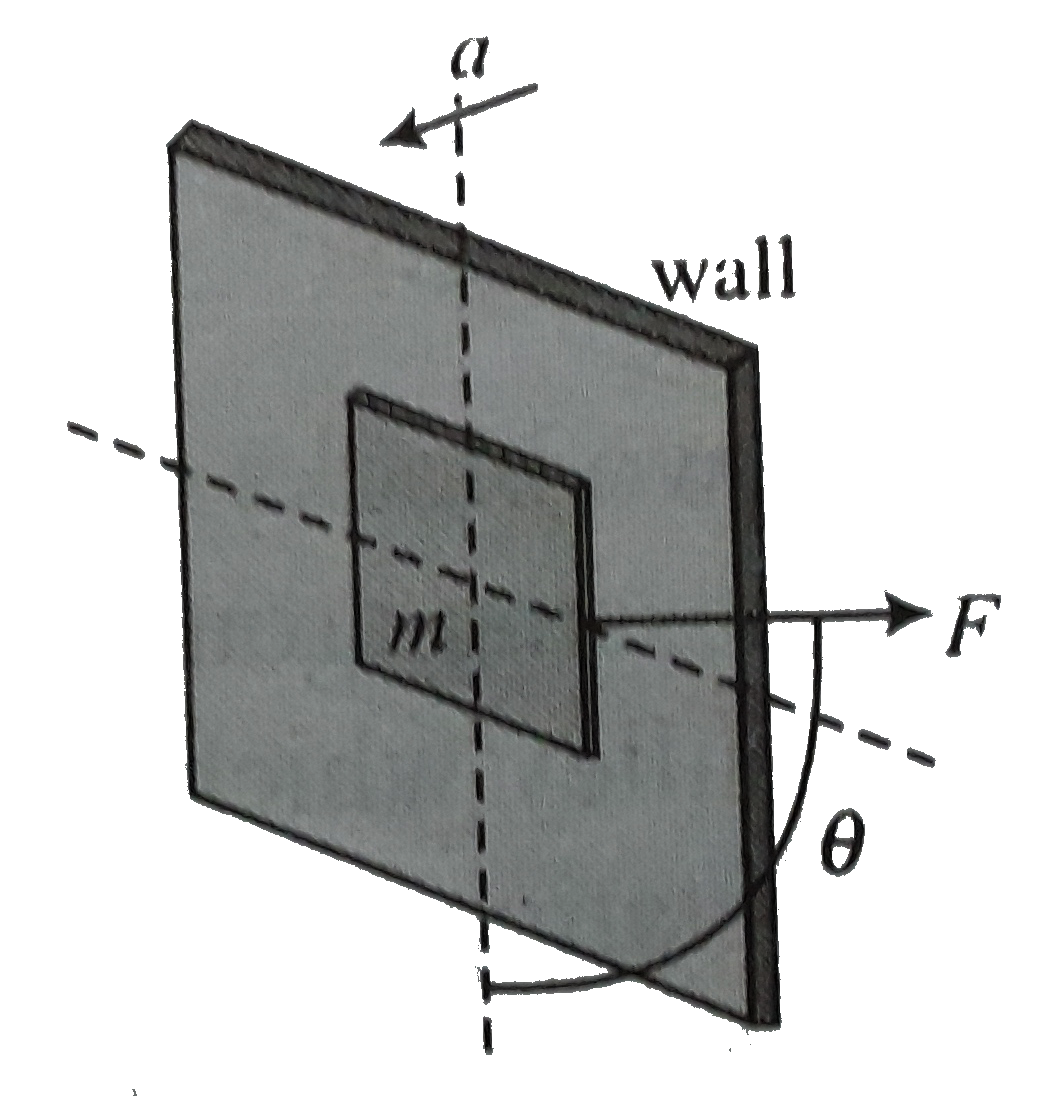 View Solution
View SolutionQuestion 14
In the arrangement shown in figure mass of blocks A,B and C is 18.5kg.8kg and 1.5kg respectively . The bottom surface of A is A is smooth while coefficient of friction that between block A and C is μ1=1/3 between B and floor is μ2=1/5 System is relased from rest r=0 and pulley are light and friction Calculate acceleration of block A ,B and C
 View Solution
View SolutionQuestion 16
A block of mass m=3kg is resting over a rough horizontal surface having coefficient of friction μ=1/3 The block is pulled to the right by appliying a force F inclined at angle 37∘ with the horizontal as shown in fig .The forceincreases with time according to law F=2r newton Calculate its velocity v at t=10s(g=10ms−2)
 View Solution
View SolutionQuestion 17
The mass of the wedge shown in fig is M=4kg and that of block is m=1kg The horizontal surface beneath the wedge is smooth while the wedge and block is equal to μ=0.1 Taking g=9.8ms−2 and assuming pulley to be massless and friction . calculate maximum possible value of force F upto while the block will remain stationary relative to the wedge
 View Solution
View SolutionQuestion 18
Calculate the maximum possible value of mass m0 of block C upto which blockA will remain stationary relative to B .If the length of block B is equal to l=50cm and mass of block C is m3=2m0 then calculate the time l when block A will topple from block B .If the system is released from rest
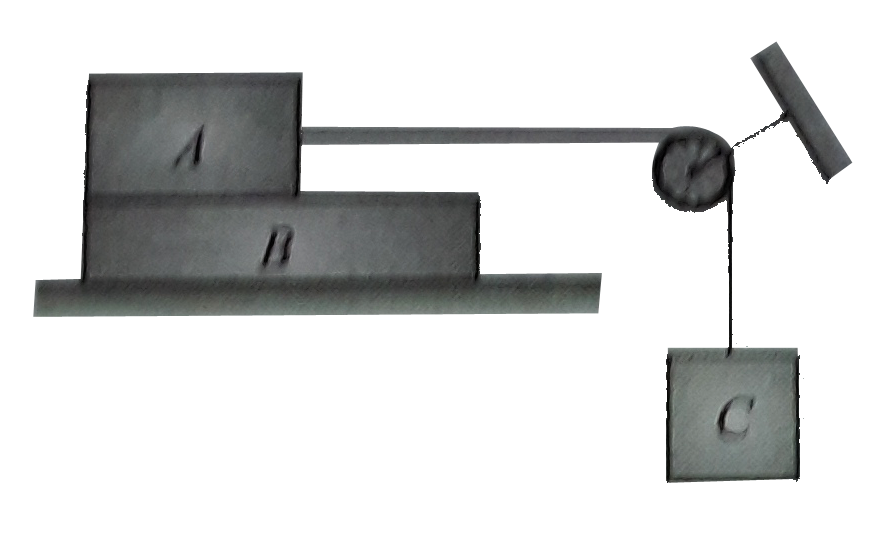 View Solution
View SolutionQuestion 19
With two hands you hold a cone motionless upside doen , as shown in figure The mass of the cone is (m=1kg) and the coefficient of static friction between you fingers and the cone is (μ=0.5) what is the minimum normal force you must applywith each hand in order to hold up the cone? Consider only translational equilibruim
 View Solution
View SolutionQuestion 20
A prismatic block of mass m is kept on a groove . The bottom line of the groove makes an angle θ with horizontal . The angle between is ϕ If the groove is symmetrical with the normal to the inclined plane containing the bottom line of the groove

a. Find the coefficient of friction μ0 between the block and groove so that the block begins to slide.
b. If μ>μ0 find the friction force on the block.
c. If μ<μ0 find the acceleration of the block.View SolutionQuestion 21
A block of mass m1 connected with another of mass m2 by a light spring of natural length l0 and stiiffness k is kept stationary on a rough horizontal surface . The coefficient of friction between m1 and surface is μ and the block m2 is smooth .The block m2 is moved with certain the block m1 in horizontal plane Find the (a) maximum to m1 and (b) acceleration of m2 in part(a)
 View Solution
View Solution

